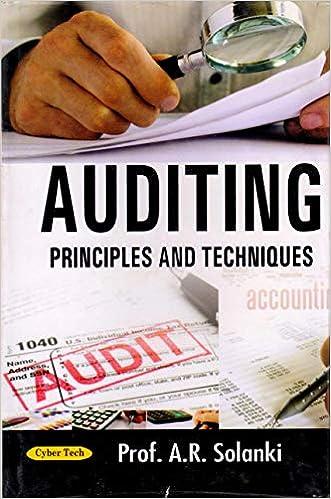Question
ForestLand Wood Products manufactures lumber and wood components. The company has two main product lines: Hardwood and Softwood. Hardwoods are used for flooring, cabinetry, paneling,
ForestLand Wood Products manufactures lumber and wood components. The company has two main product lines: Hardwood and Softwood. Hardwoods are used for flooring, cabinetry, paneling, doors and trimwork. Softwoods are used for wall studs, joists, planks, rafters, beams, stringers, posts, decking, subflooring and concrete forms. ForestLand also sells a by-product, wood shavings and saw dust. Shavings are purchased for farm and industrial use as well as for further processing into wood pellets and fiber board. The revenue is allocated to each product line based on the percentage of thousand board feet produced by the product line.
Your accounting firm has been retained by ForestLand for three years. You have been assigned to properly allocate support department costs. Your manager wants the allocation to be as accurate as possible and has instructed you to use the reciprocal services method. She reminds you that revenue from by-products are used to offset costs.
You begin your research and learn that there are four production departments: log yard, milling, drying, and packaging. The Hardwood line produces 300 thousand board feet of product while the Softwood produces 900 thousand board feet. The milling department direct costs, direct labor and overhead per thousand board feet for Hardwood is two times that of Softwood. You have been instructed to use the weighted average method to allocate the costs in the milling department between the two product lines. The remaining department costs are the same for both product lines, per thousand board feet.
There are two support departments: maintenance and administration. The maintenance department is responsible for maintaining all equipment and janitorial duties. Because the equipment is used more extensively for hardwoods, the department cost driver is hours worked. The administration department includes the company president and his staff. Their duties include accounting, human resources, and information technology. The cost driver for the administration department is number of employees.
In your first step, you determine the costs traced to each department and the usage of the support department cost drivers. You have created the following table:
| Maintenance | Administration | Log Yard | Milling | Drying | Packaging | ||
| Hours worked | 11,825 | 8,910 | 10,692 | 23,166 | 28,512 | 17,820 | |
| Number of employees | 6 | 4 | 4 | 12 | 8 | 10 | |
| Department costs | $193,600 | $237,900 | $340,950 | $521,400 | $476,450 | $246,400 |
Your next step is to determine the proportional usage of each support department's cost driver by the other departments to which its costs are to be allocated. Complete the following tables.
| Maintenance | |||
| Department | Hours Worked | Usage Percent | |
| Administration | % | ||
| Log Yard | |||
| Milling | |||
| Drying | |||
| Packaging | |||
| Totals | % | ||
| Administration | |||
| Department | # of Employees | Usage Percent | |
| Maintenance | % | ||
| Log Yard | |||
| Milling | |||
| Drying | |||
| Packaging | |||
| Totals | % | ||
Using the cells below, create the formulas that will simultaneously allocate support department costs among the departments. "M" represents Maintenance and "A" represents Administration.
M = $ + (% A )
A = $ + (% M )
Solve the equations, If required round any decimal to three places in your computations. For example, .0183 would be rounded to .018. Round your final answer to the nearest dollar.
M = $
A = $
Feedback
There are two support departments and four production departments. The total cost of each support department is allocated to the other support department and the four production departments on the basis of a cost driver. What is the cost driver for the Maintenance Department? For the Administrative Department?
For each support department, find the units of its cost driver related to the other support department and each of the four production departments. Add these to find the total units of the cost driver consumed by the five departments. Then calculate the percentage of the total consumed by each department.
Review the Reciprocal Services Method in your text. Remember the total cost to be allocated from a support department is the sum of its original departmental costs and its share of the costs allocated from the other support department. How would this be expressed in an equation?
Use the following table to allocate the support cost departments. Round allocated amounts to the nearest whole dollar. If an amount is zero, enter "0".
| Support Departments | Production Departments | |||||||
| Maintenance | Administration | Log Yard | Milling | Drying | Packaging | |||
| Hours worked | ||||||||
| Number of employees | ||||||||
| Department cost | $ | $ | $ | $ | $ | $ | ||
| Maintenance | ||||||||
| Administration | ||||||||
| Final department costs | $ | $ | $ | $ | $ | $ | ||
Feedback
Multiply the total cost to be allocated from a support department by the percentage of that cost consumed by the other support department and each of the production departments to find the amount allocated to each department. What should be the total cost remaining in a support department when the allocation process is finished?
How do figure out what percentage to use
Step by Step Solution
There are 3 Steps involved in it
Step: 1

Get Instant Access to Expert-Tailored Solutions
See step-by-step solutions with expert insights and AI powered tools for academic success
Step: 2

Step: 3

Ace Your Homework with AI
Get the answers you need in no time with our AI-driven, step-by-step assistance
Get Started


